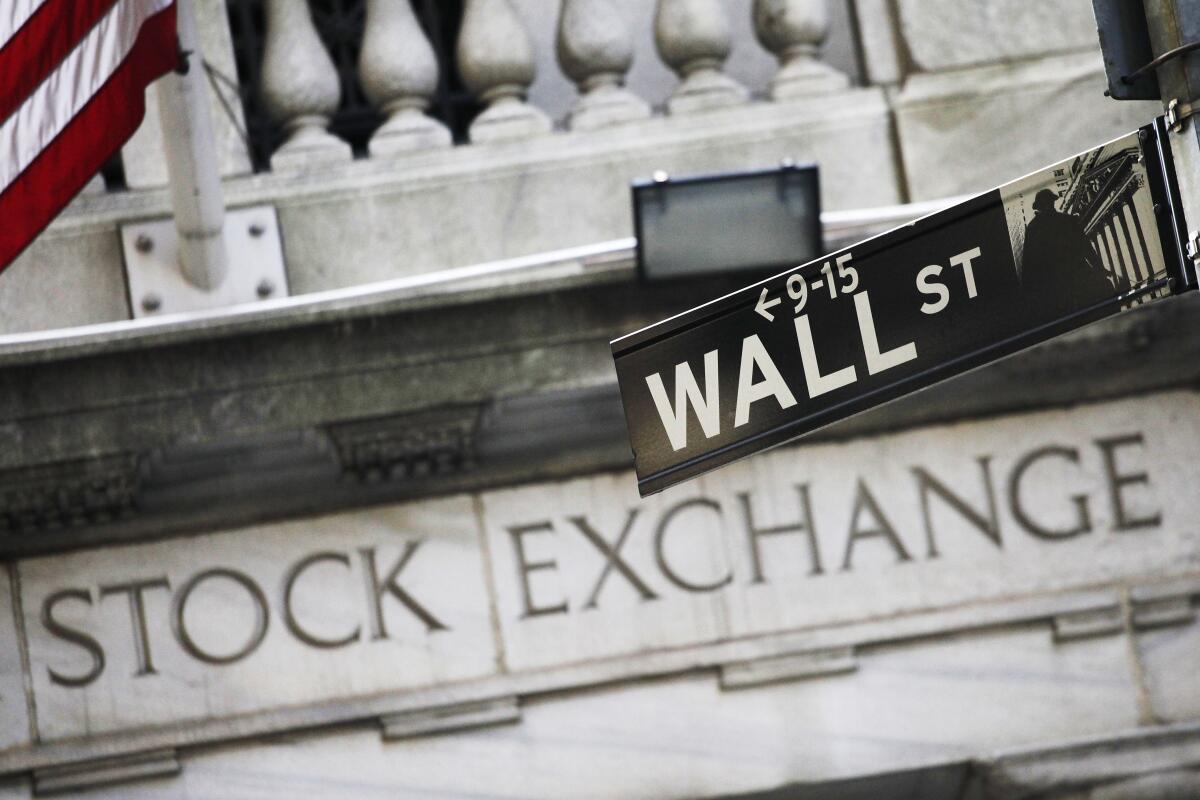Stocks rise as the economy shows more signs of improvement

U.S. stock indexes closed mostly higher Thursday after economic reports showing that layoffs are falling and the economy is growing.
The Standard & Poor’s 500 index rose 0.1% after giving up most of an earlier gain. The benchmark index is on track for a gain this week of about 1.1%. It hit an all-time high May 7 but then fell for two straight weeks.
Industrial and financial stocks were among the biggest gainers. General Electric jumped 7.1% for the biggest gain in the S&P 500, while Boeing rose 3.9% and JPMorgan Chase added 1.6%. Those gains were tempered largely by a slide in technology companies. Healthcare and household goods makers also lagged behind the broader market. Treasury yields and energy prices rose.
Investors were encouraged to see that weekly unemployment claims fell to another pandemic low and that the U.S. economy grew at a solid rate during the first quarter.
The S&P 500 rose 4.89 points to 4,200.88. It had been up 0.4% in the early going. The Dow Jones industrial average gained 141.59 points, or 0.4% to end at 34,464.64. The slide in technology stocks left the Nasdaq essentially flat. The index slipped 1.72 points, or less than 0.1%, to 13,736.28.
In another signal that investors were confident about the economy going forward, the Russell 2000 index of smaller-company stocks fared better than the broader market, picking up 23.80 points, or 1.1%, to 2,273.07.
Online medical scrubs seller FIGS surged 36.5% in its stock market debut, valuing the 8-year-old company at $4.8 billion.
Santa Monica start-up Figs has rankled competitors with its stylish scrubs and savvy marketing. A pandemic-fueled surge in sales propels it to an IPO.
Markets have been bumpy over the last few weeks as investors move past a stellar corporate earnings season and await additional clues on economic growth and inflation, which has been rising.
Investors got a mostly positive set of economic reports Thursday. The number of Americans who filed for unemployment benefits fell yet again to a pandemic low of 406,000. A growing number of states, all of them controlled by Republicans, have started cutting off unemployed workers from the $300-a-week jobless benefit that was part of the latest economic recovery package. That’s probably pushing additional Americans into the active labor force.
Meanwhile, there were disappointing data on sales of durable goods, expensive items that are expected to last three years or more. They fell 1.3%, according to the Commerce Department. That figure was expected to rise, according to economists.
Lastly, the Commerce Department reported that the U.S. economy grew at a 6.4% annual rate in the first quarter as the economy recovers from the pandemic.
Investors are looking ahead to Friday’s inflation data. The growing economy has raised inflation concerns, though analysts expect much of the increase will be tied to economic growth and will be digestible.
The data out Friday is the Commerce Department’s personal consumption expenditures index, more commonly referred to as PCE. The Federal Reserve, whose job is to monitor and control inflation as best as it can, tends to rely on PCE data more than the more widely known consumer price index, or CPI, when making policy decisions.
Bond yields have been relatively stable this week, and remained so Thursday. The 10-year U.S. Treasury note traded at a yield of 1.60%, up from 1.57% the day before. It has remained in this range for the last two weeks.
More to Read
Inside the business of entertainment
The Wide Shot brings you news, analysis and insights on everything from streaming wars to production — and what it all means for the future.
You may occasionally receive promotional content from the Los Angeles Times.










